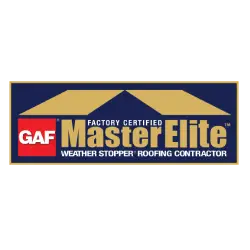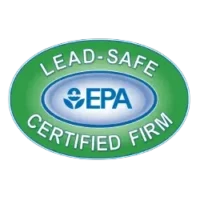
The angle or steepness of a roof is known as roof pitch. Knowing this is crucial when you need roof replacement because it directly affects the materials and cost of a project. Whether your roof has a low, moderate or high pitch, each type requires specific materials to ensure proper function, structural integrity and longevity.
To learn more about roof pitch, the right materials and pricing, read our guide here.
What Is Roof Pitch?
Roof pitch indicates a roof’s angle, steepness or slope. It’s typically expressed as a “rise over run” ratio showing how low or high the roof slopes. This ratio is often written with a colon in between two numbers, such as “2:12.” When it comes to understanding roof pitch, you must know what each value of the ratio represents:
- First value: The numerator, or the first number, indicates the roof’s vertical measurement or rise. This value depends on the roof’s steepness.
- Second value: The denominator, or second number, refers to the roof’s horizontal measurement or run. This value is always 12.
For example, 2:12 means the roof rises 2 feet for every 12 horizontal feet. This is a low-pitched roof with a slight angle. If the ratio is 10:12, the roof rises 10 feet for every 12 horizontal feet, which makes it a steep roof. Depending on the first value, you can determine whether the pitch is high or low.
Roof Pitch Classifications and Labor Cost Implications
Roof pitch is often categorized into low, medium or high, which are factors that contribute to roof prices. Labor costs for low-pitched homes are usually more affordable due to easier installation. Meanwhile, high-pitched homes typically require higher labor costs. Let’s take a closer look at these three classifications:
- Low-slope roofs: This ratio is usually less than or equal to 3:12. Low-pitched roofs don’t funnel down rainwater or snow as effectively as steep roofs, which can lead to leaks, damage and mold growth. They need more water-resistant roofing materials and need frequent maintenance. However, they typically require less intensive labor and are easier to work on.
- Medium-slope roofs: Moderately pitched roofs are typically between 4:12 and 6:12. Since they aren’t too steep, moderate pitches provide enough angle for rainwater and snow to drain or fall away. This balance provides functionality and practicality, making them less prone to water accumulation and leaks. They still need regular maintenance but are easier to work on than higher-pitched roofs.
- High-slope roofs: High-pitched roofs are usually 9:12 and above. It’s much easier for water, snow and other debris to run off these roofs. However, their high slopes more intensive labor, including specialized equipment for installation and maintenance. Steep-slope gable roofs are also prone to wind uplift during storms.
How Roof Pitch Affects Material Choices and Costs
Depending on the roof’s pitch classification, certain materials are more suitable to ensure durability, wind resistance, and efficient water drainage. However, as the material becomes more expensive, roofing prices can increase. Knowing the proper materials for different roof pitches can help you better understand roof pricing considerations.
1. Low Slopes Need Light and Waterproof Materials
Light, durable materials ensure low-pitched roofs prevent water accumulation and leaks. Materials for low-pitched roofs are typically cost-effective options. The following materials are ideal for low pitches:
- Built-up roofing: This roofing system consists of multiple layers of fabric, mat or felt. Each layer is laminated with bitumen, a strong adhesive with powerful waterproofing properties.
- Modified bitumen: Another excellent water-resistant and durable material, modified bitumen is a flexible asphalt mixed with plastic and polymerized rubber. It’s also reinforced by fiberglass.
- Ethylene propylene diene monomer: This is a strong synthetic rubber membrane installed on roofs with mechanical anchors and seams sealed with liquid adhesives.
- Thermoplastic olefin (TPO): A single-ply roof membrane, TPO is waterproof, sturdy and easy to install. It’s made of a blend of strong materials, such as polypropylene and ethylene-propylene rubber.
2. Medium and High Slopes Are Suitable With Different Materials

Since medium- and high-pitched roofs are more efficient at draining water, homeowners can be flexible with material options. However, certain materials for medium- and high-pitched roofing can be more expensive.
You can choose from the following materials:
- Three-tab asphalt shingles: Many medium-pitched residential roofs benefit from three-tab shingles made of asphalt composite. They’re dependable, cost-effective and can last long with regular maintenance. They’re commonly used on 4:12 roofs and above.
- Architectural shingles: These are asphalt shingles designed to mimic the elegant appeal of wood shakes. For example, GAF Timberline HDZ® shingles can resist harsh Long Island weather, including rainstorms and strong winds. They’re also algae-resistant, keeping your roof clean and visually appealing for years.
- Wood shingles or shakes: If you want a more traditional and elegant aesthetic, consider wood roofing. However, these are more expensive than asphalt shingles. Well-made wood shingles and shakes can withstand wind and impact damage. You can also choose fire-retardant wood shingles or shakes for roof replacement.
- Metal: Metal roofing, such as aluminum or copper, is durable and low-maintenance compared to asphalt shingles. While initially expensive, metal is cost-effective in the long term. It’s water-resistant and can withstand cracking and eroding. Roofs with a pitch of 4:12 and above can support metal shingles.
3. High Slopes Need Materials That Can Handle the Weight Load
High-pitched roof materials generally cost more than lower-pitched ones. They’re also more flexible with material options because they can drain away water efficiently. However, because high-pitched roofs are steeper, you’ll need strong, lightweight materials that don’t exert too much stress on the structure. These include options such as asphalt shingles and aluminum metal.
Asphalt shingles are initially more affordable, while metal is more expensive upfront but requires minimal maintenance. Consider which works for you based on your budget and preferred roof style.
Contact Total Home Construction for Dependable Roofing Installations
Let seasoned roofing professionals select top-quality materials suitable for your roof pitch. At Total Home Construction, our experienced team oversees all preparations for your new roof installation or replacement. We offer reliable GAF roofing systems with licensed and insured GAF Master Elite® Certified roofers.
Total Home Construction has been a trusted home remodeling company since 1989, serving homeowners on Long Island and in Westchester County. Our main priority is providing top-quality roofing, siding and windows. If you need help understanding roof estimates, our dedicated team will answer your questions and guide you every step of the way.
Contact us today to request a free consultation and roofing estimate. We look forward to serving you!











